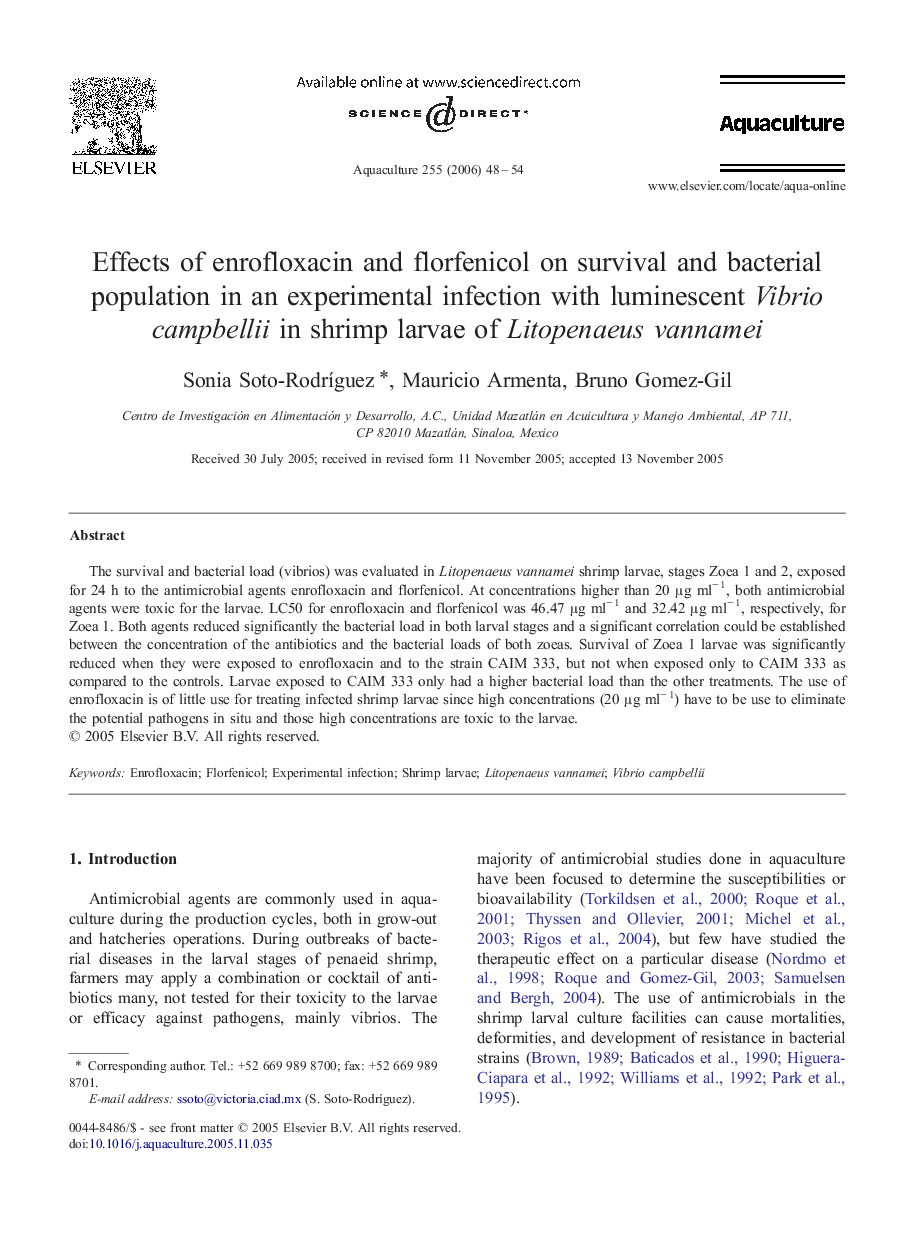| Article ID | Journal | Published Year | Pages | File Type |
|---|---|---|---|---|
| 2426055 | Aquaculture | 2006 | 7 Pages |
The survival and bacterial load (vibrios) was evaluated in Litopenaeus vannamei shrimp larvae, stages Zoea 1 and 2, exposed for 24 h to the antimicrobial agents enrofloxacin and florfenicol. At concentrations higher than 20 μg ml− 1, both antimicrobial agents were toxic for the larvae. LC50 for enrofloxacin and florfenicol was 46.47 μg ml− 1 and 32.42 μg ml− 1, respectively, for Zoea 1. Both agents reduced significantly the bacterial load in both larval stages and a significant correlation could be established between the concentration of the antibiotics and the bacterial loads of both zoeas. Survival of Zoea 1 larvae was significantly reduced when they were exposed to enrofloxacin and to the strain CAIM 333, but not when exposed only to CAIM 333 as compared to the controls. Larvae exposed to CAIM 333 only had a higher bacterial load than the other treatments. The use of enrofloxacin is of little use for treating infected shrimp larvae since high concentrations (20 μg ml− 1) have to be use to eliminate the potential pathogens in situ and those high concentrations are toxic to the larvae.
